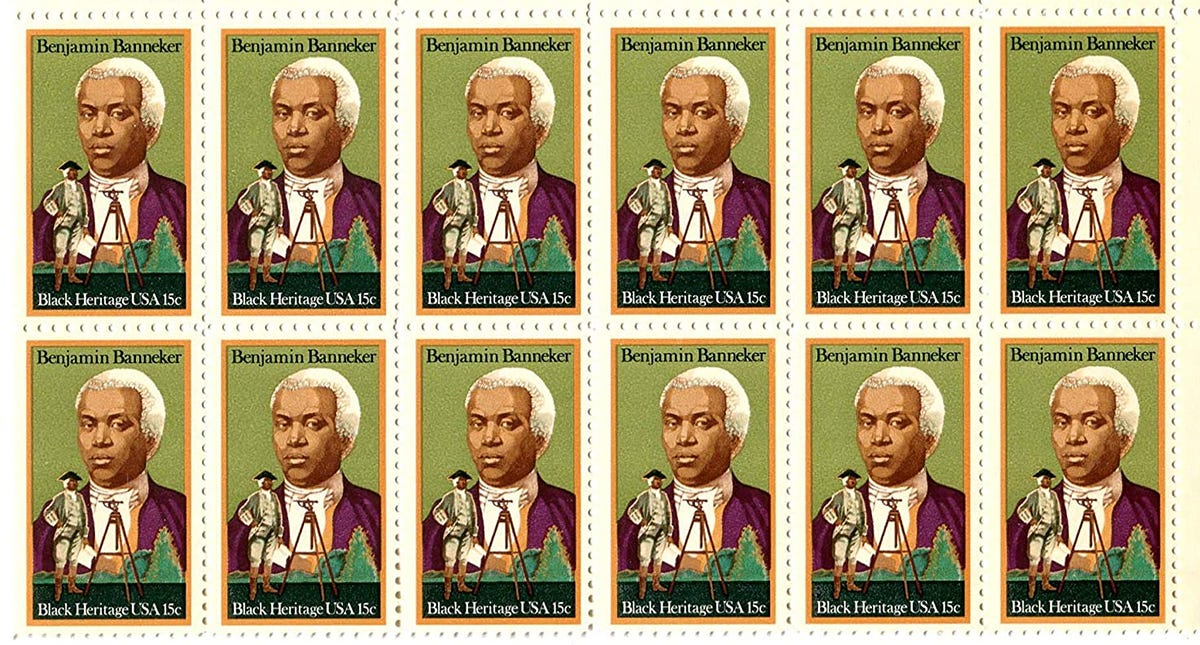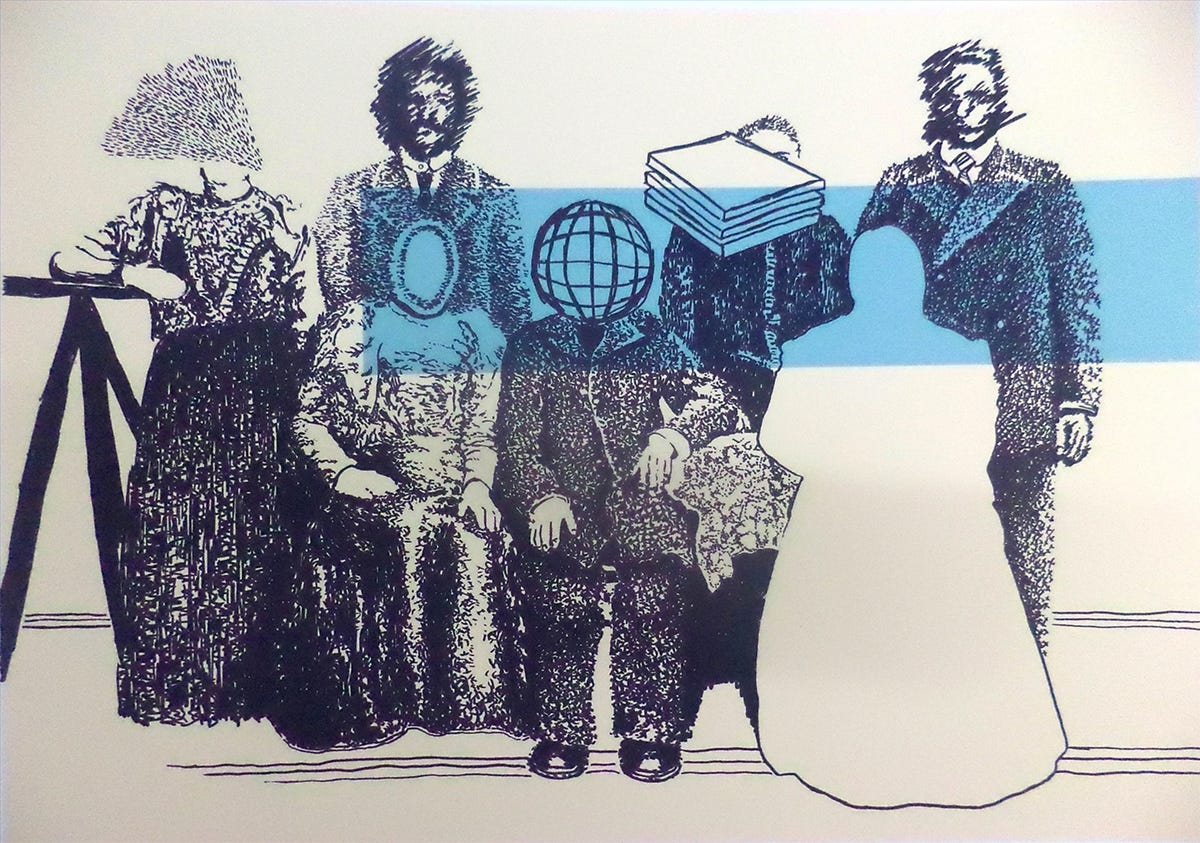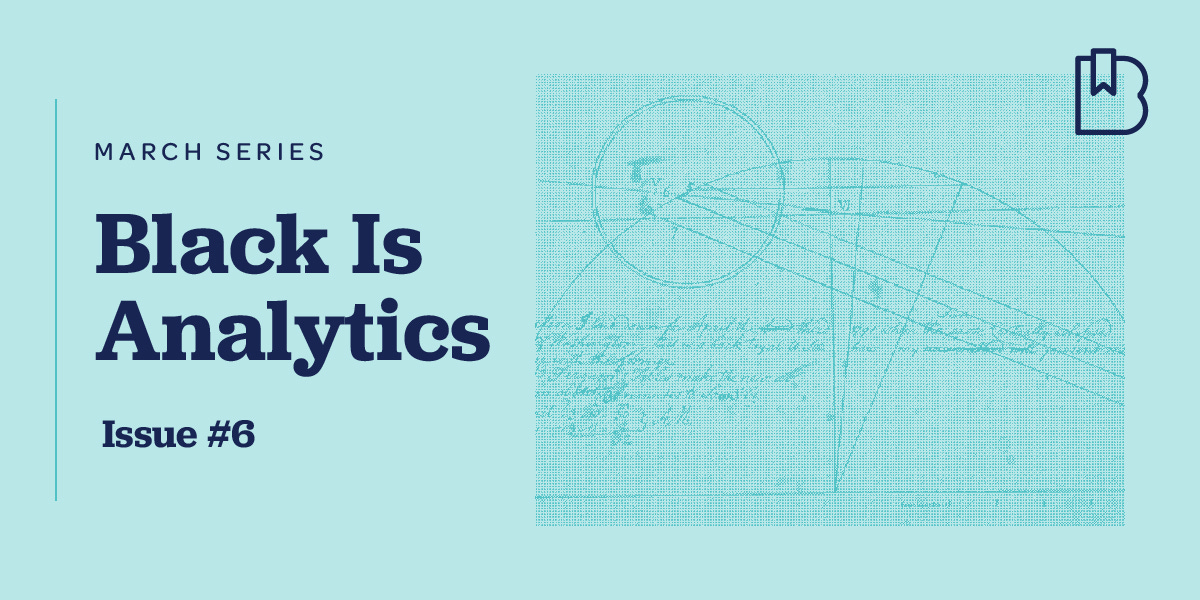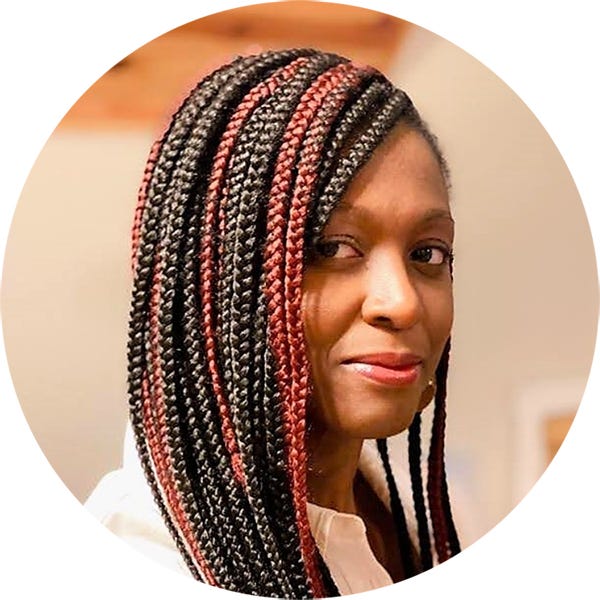📚 Black To School: Issue #6
Black Is Analytics: Enslaved Mathematicians
Black Is Analytics
Welcome to issue #6! 🧮
If you’re just joining us, Black To School is a newsletter for all people interested in learning more about the contributions of Africans and the African diaspora to global society. We explore together and collectively become the change that we want to see in our own lives, homes, and communities.
As we continue our dive into Black analytics, we’re now going to explore people that showcased Black Excellence even in dire circumstances. In this issue we’ll:
Learn about Black math geniuses in colonial America who outperformed decorated scholars and frustrated the “myth of racial inferiority” at the heart of the institution of slavery.
Showcase some great tips and tools that’ll help you reconnect (or connect!) to the magic numbers in your head.

Genius Tales
Contributor: Nimae Awantang
Since the discovery of the Lebombo bone (Issue #5), the earliest evidence of a counting tool, we have relied on mathematical objects to help us do everything from tracking time and tending crops to trading and testing scientific theories.
As impressive as many people are in memorizing multiplication tables and solving algebraic equations, very few amongst us ever reach doctoral and scholar status like these African American mathematicians. At the top of their field, they are rare talents by any measure.
As we recognize Black academic excellence, it is important to understand how intelligence is defined and evaluated.
Intelligence is a measure of a person’s ability to learn and apply knowledge. In Western cultures, it’s often measured by standardized tests (such as the IQ or Intelligence Quotient test) that assess your ability to organize information and reason.
However, there are countless studies and ongoing expert debates that show the limitations and inherent bias in these tests. There’s also conversation around how they’ve been historically used to marginalize and exclude ethnic minorities and low income populations.
As an example, the IQ Test doesn’t take into account other forms of intelligence - creative, emotional, relational, practical - and so it’s considered an insufficient measure of intelligence for non Westerners. Regardless, high scores on these tests mean access to top educational and employment opportunities, special recognition, and funding.
As we celebrate the achievements of so many of our people within the context of Western society, we must never forget that there is far more talent in our community (that we personally witness and/or benefit from), which has yet to be thoughtfully studied and acknowledged.
Have you heard about the enslaved math geniuses who were themselves an unsolvable equation?
In the 18th Century, there were some 6 to 7 million African parents, children, merchants, craftsman, artists, teachers, royals, warriors, healers, historians, and more kidnapped off of the continent and sold into slavery in the American colonies. Despite that, neither the violence that they endured nor the forced labor that they were subjected to could ever fully strip them of their natural born knowledge and abilities.
As we continue to be inspired by impactful stories during Women’s History Month, it’s fitting that this story of a great genius begins with the story of an equally important woman. Molly Welsh was an indentured English dairy maid to a Maryland tobacco farmer. Her courage and conviction ultimately led to the creation of the brilliant mathematician, Benjamin Banneker.
After Molly completed the terms and period of her seven year servitude, she rented farm land and purchased two enslaved Africans whom she later freed. She then went on to marry one of her former slaves, Bannke (or Banneka), an intelligent man and the son of an African chief, despite interracial marriage being illegal in Maryland.
Molly and Bannke’s daughter Mary also married an African man, Robert (born in Guinea, West Africa), whose freedom was bought by the couple. Robert adopted her family name, Banneker. In 1731, Mary and Robert had a son who they named Benjamin (1731-1806).

The Brilliance of Benjamin Banneker
Growing up as one of 200 freed slaves in Baltimore County, it was Molly, his grandmother, who taught Benjamin to read. He eventually attended a one-room interracial schoolhouse that was run by Quakers.
Banneker was a math and science wizard, even from an early age. At 15, he created an irrigation system for his family farm. By age 22, he had designed and built a wooden striking clock that kept perfect time, the first of its kind made in America. As an adult, he wrote six almanacs and accurately estimated the timing of solar and lunar eclipses, sunrises, and sunsets.
Upon the request of Thomas Jefferson, he was appointed as the official surveyor responsible for helping to establish the United States capital, Washington, D.C. (watch this 3 minute video about Banneker to learn more). The contributions of Banneker went far beyond those of most people, regardless of race.
As you might expect, Banneker was not alone in his talents. In the 18th Century, there were many other prominent examples of exceptional math minds like Thomas Fuller, Charles Reason, Kelly Miller, Muhammad ibn Muhammad, and Anto Amo whose very existence challenged the false connection between race and intelligence.
Collectively, their achievements served as powerful ammunition for the anti-slavery movement, which touted them as examples to counter the inferiority myth and promoted the virtue of education for all. Banneker even made a case against slavery at the highest level by writing to President Thomas Jefferson (and receiving a letter in return).
Just as the fortitude and character of Molly Welsh resulted in a legend like Benjamin Banneker, his actions along with those of other brilliant men and women have helped pave the way for following generations (we’ll learn more about that in our next issue). Black excellence in the field of mathematics is all around, and there is a legacy and history of this success during both the best and worst of times.
🛠️ The Black To School Toolkit
Now What? Dig Deeper with Friends, Family, and Others.
Interested in learning more about Black mathematicians from the past? Check out this informative Khan Academy lesson. Also, spend some time reviewing a powerful piece of history, Fuller’s obituary, which was published in the Columbian Centinel and is the sole surviving account of Fuller’s genius.
Ready for some fresh inspiration? Check out these modern day “Benjamin Bannekers!” Enjoy these 2 to 4 minute videos of math whiz-kids: Esther Okade, Caleb Anderson, Paula & Peter Imafidon, and Winnie Ngumi.
Want to share Banneker’s story with your kids and do some math together? Here’s a great TED Ed video for young viewers. Also, dive into these neat mental math games that can be practiced at home or in school.
On the search for other math enthusiasts? Join this African Math Facebook group where you can see and access a ton of helpful homeschooling, gaming, tutoring, and other resources for learning math. Are you competitive? Then check out Brilliant.
Curious about how anti-slavery activists used our genius to advance the abolitionist cause? Read this article written by Dr. Benjamin Rush who met Thomas Fuller in person, tested him, and then wrote a first-hand account of his genius. Dr. Rush was the co-founder of America’s first abolitionist society (located in Pennsylvania).
⌛ The Black To School Timeline
Black Intelligence During the Best & Worst of Times.
We started by getting a glimpse of the Stone Age (Over 43,000 Years Ago) The Thing: Lebombo bone, the first calculator in the world, created by African women, which laid the groundwork for advanced math used around the world.
This week, we stepped into the 17th & 18th Century (About 300 to 400 Years Ago)The People: Enslaved mathematicians, including Thomas Fuller and Benjamin Banneker whose genius and contributions defied and threatened the institution of slavery.
Next week, we’ll visit NASA in the 1950s (70 Years Ago) The Place: West Area Computers, the Black female mathematicians whose calculations put a man on the moon.
About This Week’s Contributor
Nimae Awantang
My name is Nimae Awantang. I am a board certified family physician currently practicing medicine as a hospitalist. I am a mother of 5 and have a passion for learning through travel, art and language. I am also a tennis and track and field mom and strong proponent of lifelong learning and continuous self development.
With the support of my husband and kids, I started a travel blog, Family Travel Africa, with the goal of sharing our family travels, tips and recommendations for a rich and memorable experience when traveling with young children. From the blog, we launched a YouTube channel where the kids and I explore and learn about topics in the fields of science, nature, finance, culture and language arts unique to Africa and the diaspora.
I believe the home is the first school and parents are the first teachers. I am truly encouraged by the comprehensive knowledge base that Black to School offers and fascinated by the resources available in the “Toolkit” section of each of our Issues. They make the historical material practical for use within my home and with family and friends. I hope that you read this newsletter and are inspired to share it - far and wide - and live into our brilliant legacy and future.
About Black To School
Black To School is a collaborative volunteer effort focused on sharing Black history, collecting helpful resources, and creating a safe space for discussion. Learn more about us here and feel free to join our Slack community to keep the conversation going. People of all backgrounds are welcome!
If you’re passionate about this type of work and want to help out, please let us know! The best way to get in touch is by emailing info@blcktoschool.com with “volunteer” as the subject, or by joining our Slack community and sharing that you’d like to be involved.



